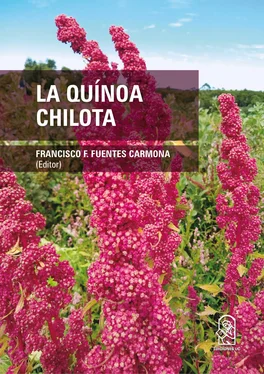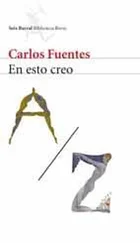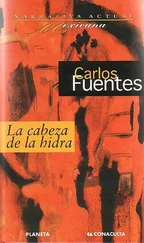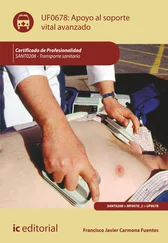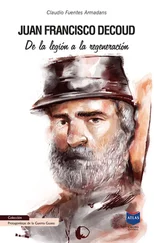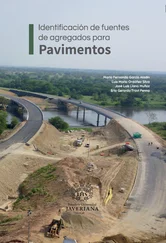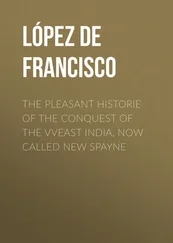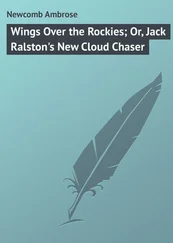Bazile D., Martínez E.A. and Fuentes F. (2014) Diversity of Quinoa in a Biogeographical Island: a Review of Constraints and Potential from Arid to Temperate Regions of Chile. Notulae Botanicae Horti Agrobotanici Cluj-Napoca. 42(2): 289-298. DOI:10.1583/nbha4229733
Bilalis D., Roussis I., Fuentes F., Kakabouki I. and Travlos I. (2017) Organic agriculture and innovative crops under mediterranean conditions. Notulae Botanicae Horti Agrobotanici Cluj-Napoca. 45(2): 323-331. DOI:10.15835/nbha45210867
Bonifacio A. (2001) Recursos genéticos, etnobotánica y distribución geográfica. In: Mujica A., Jacobsen S.E., Izquierdo J. & Marathee J.P., eds. Primer taller internacional sobre quínoa. 2001. Cultivos Andinos. [CD-ROM]. Santiago: FAO, UNA-Puno, CIP.
Christensen S.A., Pratt D.B., Pratt C., Nelson P.T., Stevens M.R., Jellen E.N., Coleman C.E., Fairbanks D.J., Bonifacio A., Maughan P.J. (2007) Assessment of genetic diversity in the USDA and CIP-FAO international nursery collections of quinoa (Chenopodium quinoa Willd.) using microsatellite markers. Plant Genetic Resources 5:82-95.
FAO-ALADI. Asociación Latinoamericana de Integración. Organización de las Naciones Unidas para la Alimentación y la Agricultura Santiago. (2014) Tendencias y perspectivas del comercio internacional de quinua. Recuperado de http://www.fao.org/3/a-i3583s.pdf
Fuentes, F. F., Maughan, P.J. & Jellen, E. N. (2009a) Diversidad genética y recursos genéticos para el mejoramiento de la quínoa (Chenopodium quinoa Willd). Revista Geográfica de Valparaíso 42, 20–33.
Fuentes, F. F., Martínez, E. A., Hinrichsen, P. V., Jellen, E.N. & Maughan, P. J. (2009b). Assessment of genetic diversity patterns in Chilean quinoa (Chenopodium quinoa Willd.) germplasm using multiplex fluorescent microsatellite markers. Conservation Genetics 10, 369–377.
Fuentes, F., Bhargava, A. (2011) Morphological analysis of quinoa germplasm grown under lowland desert conditions. Journal of Agronomy and Crop Science, 7:124-827.
Fuentes F., Bazile D., Bhargava A. and Martínez E.A. (2012) Implications of farmers’ seed exchanges for on-farm conservation of quinoa, as revealed by its genetic diversity in Chile. The Journal of Agricultural Science. 150(6): 702-716. DOI: 10.1017/S0021859612000056
Fuentes, F., Paredes-Gónzalez, X. (2014) Perspectivas Nutracéuticas de la Quínoa: Propiedades Biológicas y aplicaciones funcionales. En: FAO-CIRAD. Bazile, D., Bertero, H. D., Nieto, C. (Eds.). Estado del arte de la quinua en el mundo en 2013 (pp. 341-357). Recuperado de http://www.fao.org/3/ai4042s/index.html
Fuentes F., Olguín P., Duarte L., Ojeda M., Figueroa C., Paredes-Gonzalez X. y Martínez E.A. (2017) Potencial competitivo de la quinua chilena. C. Pérez (ed). Fundación para la Innovación Agraria. Santiago, Chile. 147 pp. ISBN N° 978-956-328-202-3
Fuentes, F., Chorbadjian, R., Rosales, M., Rojas, C. y Olguín, P. (2018) Los nuevos desafíos para la quínoa en Chile. Revista Agronomía y Forestal UC. 54: 20-25.
Heiser C.B., and Nelson C.D. (1974) On the origin of cultivated Chenopods (Chenopodium). Genetics 78:503-505.
Hinojosa, L., González J. A., Barrios-Masias F. H., Fuentes F. and Murphy K. M. (2018) Quinoa Abiotic Stress Responses: A Review. Plants. 7(4): 106. https://doi.org/10.3390/plants7040106
INE (2007). VII Censo Nacional Agropecuario y Forestal. Disponible en (consultado en Junio 27, 2018): http://www.ine.cl/canales/base_datos/otras_bases_datos.php.
Jacobsen, S.E. (2003) The worldwide potential of quinoa (Chenopodium quinoa Willd.). Food Rev. Int. 19(1-2):167-177.
Jarvis, D.E.; Ho, Y.S.; Lightfoot, D.J.; Schmöckel, S.M.; Li, B.; Borm, T.J.A.; Ohyanagi, H.; Mineta, K.; Michell, C.T.; Saber, N.; et al. (2017) The genome of Chenopodium quinoa. Nature. 542: 307–312.
Junge, I. (1978) La Quinoa y Lupinus en Chile. Tesis, Universidad de Concepción, Chile.
Lanino, I. (1976) La Quínoa: Cultivo del altiplano chileno, zona de Isluga. Universidad del Norte, Sede Iquique, Chile.
Looser, G. (1943) Chenopodium quinoa, un cultivo que desaparece de Chile. Revista Argentina de Agronomía 10:111-113.
Madrid D., Salgado E., Verdugo G., Olguín P., Bilalis D. and Fuentes F. (2018) Morphological traits defining breeding criteria for coastal quinoa in Chile. Notulae Botanicae Horti Agrobotanici Cluj-Napoca. 46(1): 190-196. DOI:10.15835/nbha46110788
Martínez E.A., Fuentes F. and Bazile D. (2015) History of Quinoa: It’s Origin, Domestication, diversification and Cultivation with particular reference to the Chilean context. In: Quinoa: Sustainable Production, Variety Improvement, and Nutritive Value in Agroecological Systems. K. Murphy (ed). John Wiley & Sons. pp. 19-24. ISBN: 9781118628058
Maughan, P.J., Kolano B.A., Maluszynska J., Coles N.D., Bonifacio A., Rojas J., Coleman C.E., Stevens M.R., Fairbanks D.J., Perkinson S.E., Jellen E.N. (2006) Molecular and cytological characterization of ribosomal RNA genes in Chenopodium quinoa and Chenopodium berlandieri. Genome 49: 825-839.
Molina, J.I. (1810). Ensayo sobre la historia Natural de Chile. Libro III, Vegetales de Chile.
Mujica, A., Jacobsen S.E. (2000) Agrobiodiversidad de las aynokas de quinua (Chenopodium quinoa Willd.) y la seguridad alimentaria. Seminario Agrobiodiversidad en la Región Andina y Amazónica 151-156.
Mujica, A. y E. Jacobsen. (2006) La quinua (Chenopodium quinoa Willd.) y sus parientes silvestres. Botánica Económica de los Andes Centrales. 449-457.
Risi, J. and N. Galwey. (1984) The Chenopodium grains of the Andes: Inca crops for modern agriculture. Adv Appl Bot 10:145-216.
Ruas P., Bonifacio A., Ruas C., Fairbanks D., Andersen W. 1999. Genetic relationship among 19 accessions of six species Chenopodium L., by Random Amplified Polymorphic DNA fragments (RAPD). Euphytica 105:25–32.
Wilson, H.D. (1980) Artificial hybridization among species of Chenopodium sect. Chenopodium. Systematic Botany 5:253-263.
Wilson H.W., Heiser C.B. (1979) The origin and evolutionary relationships of ‘huauzontle’ (Chenopodium nuttaliae Safford), domesticated chenopod of Mexico. American Journal of Botany 66:198-206.
Wilson H. and J. Manhart. (1993) Crop/weed gene flow: Chenopodium quinoa Willd. and C. berlandieri Moq. Theor Appl Genet 86:642-648.
1Consumo aparente = (Vol. Importado 2015 – Vol. Exportado) / Población nacional - http://bit.ly/2b96WWJ
2Estudio FIA “Potencial competitivo de la quínoa chilena” (estudio dirigido de consumo en la ciudad de Santiago).
CAPÍTULO 2
CONFIGURACIÓN TERRITORIAL DE LA ISLA DE CHILOÉ
PABLO OLGUÍN, CLAUDIA ROJAS, DANIELA MADRID Y FRANCISCO FUENTES
Facultad de Agronomía e Ingeniería Forestal
Pontificia Universidad Católica de Chile
INTRODUCCIÓN
Конец ознакомительного фрагмента.
Текст предоставлен ООО «ЛитРес».
Прочитайте эту книгу целиком, купив полную легальную версию на ЛитРес.
Безопасно оплатить книгу можно банковской картой Visa, MasterCard, Maestro, со счета мобильного телефона, с платежного терминала, в салоне МТС или Связной, через PayPal, WebMoney, Яндекс.Деньги, QIWI Кошелек, бонусными картами или другим удобным Вам способом.
